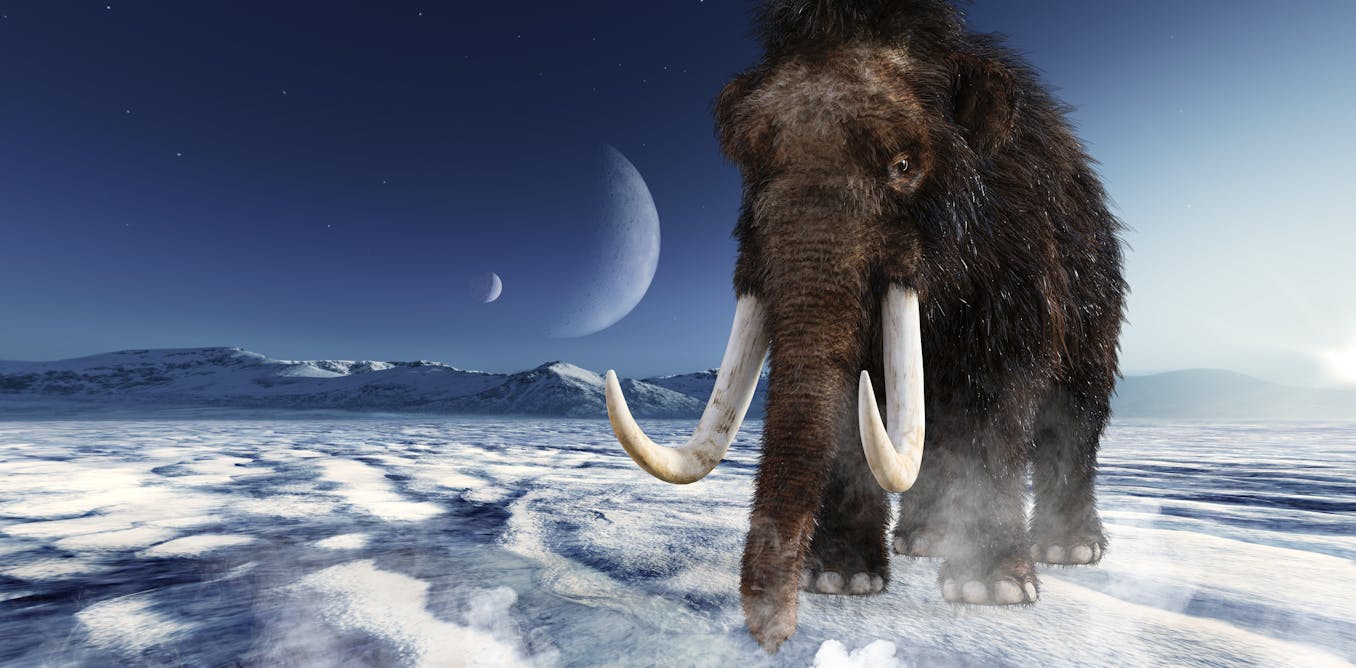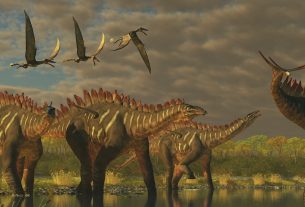In science, we usually share our successes and ignore the less glamorous mishaps. We decided to follow a different approach. This is the story of how multiple generations of scientists collaborated to decipher the genome of the mammoth formerly known as Lonely Boy, often referred to as the last mammoth on the Earth.
The woolly mammoth was one of the most charismatic species of the last Ice Age, between roughly 120,000 to 12,000 years ago. Yet, the cause of its extinction remains a mystery. Mammoths roamed large parts of the northern hemisphere during their heyday, but by the end of the Ice Age, they had disappeared from most of their former range. The last mammoth population lived on Wrangel Island, a small island off the Siberian coast, until its final demise about 4,000 years ago.
In our new study, published in Cell, we investigated whether the Wrangel Island mammoth population was genetically destined for extinction. And despite many mistakes along the way, we ultimately discovered it wasn’t.
Mammoths became isolated on Wrangel Island around 10,000 years ago due to rising sea levels and survived as a small population for thousands of years. Inbreeding is a common problem in small populations and its negative effects could accumulate over time, eventually leading to an unviable population and extinction.
Inbreeding can cause lots of issues. Portraits of Charles II of Spain, last monarch of the Habsburg house, show his deformed chin due to generations of inbreeding. Scientists have long wondered whether genomic processes led to the extinction of the mammoths on Wrangel Island.
To address this, we generated a dataset of 21 mammoth genomes spanning the last 50,000 years of the species’ existence. This dataset allowed us to travel back in time and study the genetic effects of their isolation over time.
Lonely Boy was the most precious individual in our dataset, the sample key to understanding why mammoths went extinct. Sequencing Lonely Boy’s DNA, however, proved to be challenging.
The adventures of Lonely Boy
Generating a genome for Lonely Boy took multiple attempts over a time span of almost ten years. In our first attempt to extract DNA, our sample turned out to be plagued with human contamination. In our second attempt, we used bleach to remove as much contamination as possible.
Although this is common practice in the field of ancient DNA, it also comes with the trade-off that some of the mammoth DNA will also inadvertently be destroyed. In our case, it meant that not enough mammoth material was left in the sample to generate a high-quality genome.
In a final attempt, we merged the data from the different DNA extracts from Lonely Boy. However, the DNA from our different extracts, while similar, looked like it belonged to different individuals. We came up with the wildest theories as to explain these new results.
Love Dalén, Author provided
One of our leading theories at the time was that Lonely Boy had a condition called the “vanishing twin syndrome”. Apparently, in some rare cases, a mammal foetus can absorb the genetic material of a diseased twin during gestation. This would explain why the DNA extracts looked similar, yet not entirely identical.
In the end, the explanation was not nearly as exciting and could all be tracked back to the egregious amount of effort we had put into this sample. This resulted in strange lab artefacts (which is anything causing difficulty in interpreting a specimen) – normally not even noticeable – that introduced a false genetic variation in the sample. We therefore created a simple filter to remove these artefacts.
But even after all these steps, Lonely Boy still looked like an outlier. At this point, we decided to re-date the sample. Lonely Boy had been dated a long time ago and methods have considerably improved since then.
The result came as a big surprise. Lonely Boy was not 4,000 years old as initially thought, but closer to 5,500 years – making him a completely average mammoth in our dataset, rather than the last such individual on Earth.
Causes of extinction
To answer the original question of this project, no, the Wrangel Island population did likely not go extinct due to inbreeding. By comparing our genomic data with results from computer simulations, we now know that the population decline of the mammoths after isolation on Wrangel Island some 10,000 years ago must have been huge, with only eight breeding individuals remaining.
Nevertheless, our results show that the population recovered quickly to a population size of 300 within 20 generations and remained stable until the mammoth’s final demise. We can see it remained stable since there is virtually no change in inbreeding levels through this period.
However, our results on harmful mutations tell a different story. While the most harmful mutations were gradually purged from the population through natural selection, mildly harmful mutations accumulated over time. This indicates that the initial population decline – despite fast recovery – had long-lasting genetic effects.
Predicting the exact effect of harmful mutations is challenging, especially in an extinct species. Comparison with known human diseases suggests that some of the most harmful purged mutations likely disrupted genes that may have been important for the development of different senses, like hearing and sight.
Yet it seems unlikely that this caused the mammoth’s final demise. Based on our results, the extinction must have happened rapidly. Humans did not co-exist with mammoths on the island, but a sudden event, such as a disease outbreak or a weather event, could have caused the population’s sudden extinction.
As with most things in science, more research will hopefully provide new insights. Potentially even with a new Lonely Boy or Girl.
Although we eventually managed to analyse the inbreeding of mammoths, it was a long journey with many detours. Yet, as a lab group we learned a lot from this project. We came up with a new bioinformatic method to deal with human contamination and discovered a new type of lab artefact. This new information may well be crucial to pinpoint the exact reasons why the woolly mammoth became extinct.



